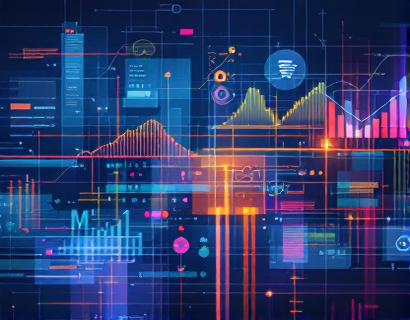NFTs: Revolutionizing Digital Ownership for Creators and Collectors in the Digital Ecosystem
The emergence of Non-Fungible Tokens, or NFTs, has brought about a paradigm shift in the way digital ownership is perceived and managed. This innovative technology has the potential to transform the digital landscape, offering creators and collectors unprecedented opportunities to craft, trade, and manage unique digital assets. In this article, we will delve into the world of NFTs, exploring how they are redefining digital ownership and scarcity, and unlocking endless possibilities in the evolving digital ecosystem.
To understand the impact of NFTs, it is essential to first grasp the fundamental concepts of blockchain technology and digital assets. Blockchain, the underlying technology behind cryptocurrencies like Bitcoin and Ethereum, is a decentralized ledger that records transactions across multiple computers. This ensures transparency, security, and immutability. Digital assets, on the other hand, are any form of value stored or represented digitally, including images, videos, music, and other files. The combination of blockchain and digital assets gives rise to NFTs, which are unique digital tokens representing ownership of a specific asset.
One of the key features of NFTs is their ability to prove ownership and authenticity in the digital realm. Unlike traditional digital files that can be easily duplicated, NFTs are unique and verifiable, ensuring that each token represents a one-of-a-kind asset. This is achieved through smart contracts, self-executing contracts with the terms of the agreement directly written into code. These smart contracts define the rules and conditions for the creation, ownership, and transfer of NFTs, providing a secure and transparent framework for digital transactions.
The creation of NFTs is a straightforward process. Artists, creators, and collectors can use various platforms and tools to mint NFTs, which involves converting their digital assets into NFT tokens on a blockchain network. For instance, using the Ethereum blockchain, creators can utilize platforms like OpenSea or Rarible to mint their NFTs. The process typically involves uploading the digital asset, setting the price, and specifying any additional metadata or attributes. Once minted, the NFT is listed for sale, and the creator retains the ownership and can set royalties for future sales, ensuring ongoing revenue from secondary market transactions.
Empowering Creators
For digital creators, NFTs offer a new avenue to monetize their work and establish a direct connection with their audience. Traditional art markets often involve intermediaries such as galleries and dealers, which can take a significant portion of the artist's earnings. NFTs eliminate these middlemen, allowing creators to sell their digital art directly to collectors and retain a larger share of the profits. This democratization of the art market empowers emerging artists and provides established creators with new revenue streams.
Moreover, NFTs enable creators to add layers of interactivity and exclusivity to their digital works. For example, an artist can create a series of NFTs, each with unique attributes or bonus content, such as behind-the-scenes materials, exclusive access to events, or even physical merchandise. This not only enhances the value of the NFT but also fosters a deeper engagement between the creator and the collector. The ability to offer limited editions or unique experiences through NFTs can significantly increase the appeal and desirability of digital art.
Fostering a Vibrant Collector Community
The collector community has also been profoundly impacted by the advent of NFTs. Collectors can now own and trade unique digital assets with a level of security and verification that was previously unattainable. The transparency of blockchain technology ensures that the provenance and ownership history of each NFT are transparent and tamper-proof. This trust and authenticity are crucial for collectors who seek to build and preserve valuable digital collections.
NFT marketplaces and communities have emerged as hubs for collectors to discover, purchase, and trade digital assets. These platforms often feature robust search and filtering tools, allowing collectors to find specific types of NFTs based on criteria such as artist, style, price, and popularity. The social aspect of these platforms is equally important, as they provide forums and spaces for collectors to connect, share knowledge, and collaborate. This community-driven approach enhances the overall experience and fosters a sense of belonging among NFT enthusiasts.
Redefining Digital Ownership and Scarcity
One of the most significant impacts of NFTs is the redefinition of digital ownership and scarcity. In the traditional digital world, copies of files can be made infinitely without losing quality, making it challenging to establish ownership or scarcity. NFTs change this by assigning unique identifiers to each token, ensuring that only one person can own a particular NFT at a time. This scarcity creates a new economic model where digital assets can appreciate in value over time, much like physical art or collectibles.
The concept of scarcity is further enhanced by limited edition NFTs, where only a fixed number of tokens are created. This exclusivity drives demand and can lead to higher prices in the secondary market. For instance, a limited edition NFT series by a popular artist can become highly sought after, with collectors willing to pay premium prices for the opportunity to own a piece of digital history. This shift in value dynamics is reshaping the way we think about digital assets and their potential worth.
Unlocking Endless Possibilities
The potential applications of NFTs extend far beyond art and collectibles. In the realm of gaming, NFTs can represent unique in-game items, characters, or even virtual real estate, providing players with tangible assets that can be owned and traded outside the game. This not only enhances the gaming experience but also opens up new revenue streams for game developers and players alike. In the music industry, artists can issue NFTs for exclusive tracks, behind-the-scenes content, or even fractional ownership of a song, creating new ways to monetize and engage with fans.
In the real estate sector, NFTs can represent fractional ownership of properties, making high-value real estate more accessible to a broader audience. This innovation can democratize real estate investment and provide new opportunities for wealth creation. Additionally, NFTs can be used to verify the authenticity and provenance of physical items, such as luxury goods or art, reducing fraud and enhancing consumer trust.
Challenges and Considerations
While the potential of NFTs is vast, there are several challenges and considerations that need to be addressed. One of the primary concerns is the environmental impact of blockchain technology, particularly proof-of-work blockchains like Ethereum, which require significant energy consumption. The industry is actively exploring more sustainable alternatives, such as proof-of-stake mechanisms, to mitigate these concerns.
Another challenge is the regulatory landscape, which is still evolving. Governments and regulatory bodies are grappling with how to classify and regulate NFTs, especially in terms of taxation, consumer protection, and anti-money laundering measures. Creators and collectors must stay informed about these developments to navigate the legal aspects of NFT transactions.
Furthermore, the volatility of cryptocurrency markets can affect the value of NFTs. While this volatility can lead to significant gains, it can also result in losses. Collectors and investors should approach NFTs with a clear understanding of the risks involved and adopt a well-informed investment strategy.
Conclusion
The integration of NFTs into the digital ecosystem is revolutionizing the way we think about ownership, scarcity, and value in the digital world. By providing a secure, transparent, and innovative platform for creators and collectors, NFTs are unlocking endless possibilities and transforming the digital landscape. As the technology continues to evolve and mature, the potential for NFTs to reshape various industries and create new economic models is immense. Whether you are a creator looking to monetize your digital work or a collector seeking unique digital assets, the world of NFTs offers exciting opportunities to explore and embrace.










































